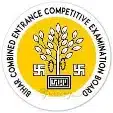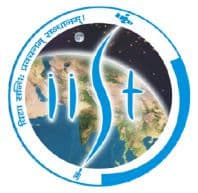Latest Applications Open 2024:
BCECEB conducts the BCECE Entrance Exam for admission into Engineering, Pharmacy, and Agriculture. BCECE released an official Syllabus for admission into Engineering, Pharmacy, and Agriculture. The Physics syllabus for the Bihar Combined Entrance Competitive Examination (BCECE) is a vital component of the examination’s curriculum. It covers a broad spectrum of topics in physics, assessing candidates’ understanding of fundamental principles and their ability to apply them to solve complex problems.
The Syllabus consists of Physics, Chemistry, Biology, and Mathematics. Topics such as mechanics, electromagnetism, optics, thermodynamics, and modern physics are included. A solid grasp of these subjects is essential for success in the BCECE, as they are crucial in determining candidates’ eligibility for various undergraduate programs in Bihar. This syllabus challenges students to demonstrate their proficiency in the fascinating world of physics.
Here, we will mention the complete BCECE 2024 Syllabus for Physics. The BCECE Exam is done in one phase. Candidates can also check the BCECE 2024 Chemistry, Mathematics, and Biology Syllabus.
BCECE 2024 Physics Syllabus – Available
BCECE 2024 Physics Syllabus is available here to download. Click to Download Free PDF.
Physical-world and Measurement
Physics: Scope and excitement, nature of physical laws; Physics, technology, and society. Need for measurement: Units of measurement, systems of units. S.I. Units, fundamental and derived units, length, mass and time measurements, accuracy and precision of measuring instruments, Errors in measurement, significant figures, regular and irregular errors. Dimensions of physical quantities, dimensional analysis, and applications.
Kinematics
The frame of reference, Motion in a straight line, position-time graph, speed, and velocity. Uniform and non-uniform motion, average speed, and instantaneous velocity. Uniformly accelerated motion, velocity-time and position-time graphs, relations for uniformly accelerated motion (graphical treatment). Elementary concepts of differentiation and integration for describing motion.
Scalar and vector quantities Position and displacement vectors, general vectors, and notation, equality of vectors, multiplication of vectors by a real number, addition, and subtraction of vectors, relative velocity.Unit vector, Resolution of a vector in a plane-rectangular component. Motion in a plane, Cases of uniform velocity and uniform acceleration – projectile motion, uniform circular motion.
Work, Energy, and Power
Scalar product of Vector work done by a constant force and a variable force, kinetic energy, work-energy theorem, power. The notion of potential energy, the potential energy of a spring, conservative forces; conservation of mechanical energy (kinetic and potential energies), nonconservative forces, elastic and inelastic collisions in one and two dimensions.
The Motion of System of Particles and Rigid Body.
Center of the mass of the two-particle system, momentum, conservation and center of mass motion, the center of mass of a rigid body, center of mass of circular ring, disc, rod, and sphere. Vector product of vectors; the momentum of a force, torque angular momentum, conservation of angular momentum with some examples. Equilibrium of rigid bodies, rigid body rotation, and equations of rotational motion, comparison of linear and rotational motion, a moment of inertia, the radius of gyration. Values of M.I. for simple geometrical objects (no derivation), statement of parallel and perpendicular axes theorems and their applications.
Gravitation
Kepler’s laws of planetary motion, The universal law of gravitation, Acceleration due to gravity and its variation with altitude and depth. Gravitational potential energy, gravitational potential, escape velocity, orbital velocity of satellite, Geo-stationary satellites.
Properties of Bulk Matter
Elastic behavior, stress-strain relationship, Hooke’s law, Young’s modulus, Bulk modulus, Deformation, Shear modulus of rigidity. Pressure due to the fluid column, Pascal’s law and its applications / hydraulic lift and hydraulic brakes). Effect of gravity on fluid pressure. Viscosity, Stoke’s law terminal velocity, Reynolds’s number, streamline and turbulent flow, Bernoulli’s theorem, and its applications. Surface energy and surface tension, angle of contact, application of surface tension, ideas to drop bubbles, and capillary rise.
Heat and Thermodynamics
Heat, temperature, thermal expansion, specific heat capacity, Calorimetry, change of state, latent heat. Heat transfer-conduction, convection, and radiation, thermal conductivity, Newton’s law of cooling. Thermal equilibrium and definition of temperature (Zeroth law of thermodynamics). Heat, work, and internal energy. The first law of thermodynamics. The second law of thermodynamics, Reversible and irreversible processes. Heat engines and refrigerators.
The behavior of Perfect Gas and Kinetic Theory
Equation of state of a perfect gas, work done on compressing a gas. Kinetic theory of gases: Assumptions, the concept of pressure, Kinetic energy and temperature, RMS speed of gas molecules, degrees of freedom, the law of equipartition of energy (statement only) and application to specific heat capacities of gases, the concept of mean free path, Avogadro’s number.
Oscillations and Waves
Periodic motion – period, frequency, displacement as a function of time, periodic functions, simple harmonic motion (SHM) and its equation, phase, the oscillation of a spring – restoring force and force constant energy in SHM – Kinetic and potential energies, simple pendulum – derivation of expression for its time period) free, forced and damped oscillations (qualitative ideas only), resonance. Wave motion, Longitudinal, and transverse waves, speed of wave motion, Displacement relation for progressive waves, the principle of superposition of waves, a reflection of waves, standing waves in strings and organ pipes, fundamental mode and harmonics, Beats, Doppler effect.
Electrostatics
Electric Charge; Conservation of charge, Coulomb’s law-force between two point charges, forces between multiple charges; superposition principle and continuous charge distribution. Electric field; electric field due to a point charge, electric field lines; electric dipole, electric field due to a dipole;
torque on a dipole in the uniform electric field. Electric flux, statement of Gauss’s theorem and its applications to find field due to an infinitely long straight wire, uniformly charged infinite plane sheet and uniformly charged thin spherical shell (field inside and outside).
Electric potential, potential difference, electric potential due to a point charge, a dipole and system of charges; equipotential surfaces, electrical potential energy of a system of two point charges and of electric dipole in an electrostatic field. Conductors and insulators, free charges and bound charges inside a conductor. Dielectrics and electric polarization, capacitors and capacitance, the combination of capacitors in series and in parallel, the capacitance of a parallel plate capacitor with and without dielectric medium between the plates, energy stored in a capacitor. Van de Graaff generator.
Current Electricity
Electric current, the flow of electric charges in a metallic conductor, drift velocity, mobility and their relation with electric current; Ohm’s law, electrical resistance, V-I characteristics (linear and non-linear), electrical energy and power, electrical resistivity and conductivity. Carbon resistors, color code for carbon resistors; series and parallel combinations of resistors; temperature dependence of resistance. The internal resistance of a cell, potential difference, and emf of a cell, combination of cells in series and in parallel. Kirchhoff’s laws and simple applications. Wheatstone bridge, meter bridge. Potentiometer – principle and its applications to measure potential difference and for comparing emf of two cells; measurement of internal resistance of a cell.
Magnetic effects of current & Magnetism
Concept of the magnetic field, Oersted’s experiment. Bio-Savart law and its application to current carrying circular loop.Ampere’s law and its applications to infinitely long straight wire, straight and toroidal solenoids. Force on a moving charge in uniform magnetic and electric fields. Cyclotron. Force on a current-carrying conductor in a uniform magnetic field. The force between two parallel current-carrying conductors-definition of ampere. Torque experienced by a current loop in a uniform magnetic field, moving coil galvanometer-its current sensitivity and conversion to ammeter and voltmeter.
Current loop as a magnetic dipole and its magnetic dipole moment. The magnetic dipole moment of a revolving electron. Magnetic field intensity due to a magnetic dipole (bar magnet) along its axis and perpendicular to its axis. Torque on a magnetic dipole (bar magnet) in a uniform magnetic field; bar magnet as an equivalent solenoid, magnetic field lines; Earth’s magnetic field and magnetic elements. Para-, dia- and ferromagnetic substances, with examples. Electromagnets and factors affecting their strengths. Permanent magnets.
Electromagnetic Induction and Alternating currents
Electromagnetic induction; Faraday’s law, induced emf and current; Lenz’s Law, Eddy currents. Self and mutual inductance.Need for displacement current.Alternating currents, peak and RMS value of alternating current/ voltage; reactance and impedance; LC oscillations(qualitative treatment only), LCR series circuit, resonance; power in AC circuits, wattles current. AC generator and transformer.
Electromagnetic Waves
Electromagnetic waves and their characteristics (qualitative ideas only). Transverse nature of electromagnetic waves. Electromagnetic spectrum (radio waves, microwaves, infrared, visible, ultraviolet, X-rays gamma rays) including elementary facts about their uses.
Optics
Reflection of light, spherical mirrors, mirror formula, Refraction of light, total internal reflection and its applications, optical fibers, refraction at spherical surfaces, lenses, thin lens formula, lens maker’s formula. Magnification, power of a lens, combination of thin lenses in contact, Refraction, and dispersion of light through a prism.Scattering of the light-blue color of the sky and reddish appearance of the sun at sunrise and sunset.Optical instruments; Human eye, image formation and accommodation, correction of eye defects (myopia, hypermetropia, presbyopia, and astigmatism) using lenses.
Microscopes and astronomical telescopes (reflecting and refracting) and their magnifying powers. Wave optics: wavefront and Huygens’ principle, reflection and refraction of plane wave at a plane surface using wavefronts. Proof of laws of reflection and refraction using Huygens’ Principle. Interference, Young’s double-slit experiment and expression for fringe width, coherent sources, and sustained interference of light. infraction due to a single slit, width of central maximum. Resolving power of microscopes and astronomical telescopes. Polarisation, plane polarised light; Brewster’s law, uses of plane polarised light and Polaroids.
Dual Nature of Matter and Radiation
Photoelectric effect, Hertz and Lenard’s observations; Einstein’s photoelectric equation-particle nature of light. Matter waves-wave nature of particles, de Broglie relation. Division-Germer experiment.
Atoms and Nuclei
Alpha-particle scattering experiment; Rutherford’s model of atom; Bohr model, energy levels, hydrogen spectrum.Composition and size of nucleus, atomic masses, isotopes, isobars; isotopes, Radioactivity-alpha, beta and gamma particles/rays, and their properties; radioactive decay law. Mass-energy relation, mass defect; binding energy per nucleon and its variation with mass number; nuclear fission and fusion.
Electronic Devices
Semiconductors; semiconductor diode – I-V characteristics in forward and reverse bias, diode as a rectifier; I-V characteristics of LED, photodiode, solar cell, and Zener diode; Zener diode as a voltage regulator. Junction transistor, transistor action, characteristics of a transistor; transistor as an amplifier (common emitter configuration) and oscillator. Logic gates (OR, AND, NOT, NAND and NOR). Transistor as a switch.
Communication Systems
Elements of a communication system (block diagram only); bandwidth of signals (speech, TV and digital data); bandwidth of transmission medium. Propagation of electromagnetic waves in the atmosphere, sky, and space wave propagation. Need for modulation. Production and detection of an amplitude-modulated wave.
If you have any other queries about BCECE Physics Syllabus 2024, you can write your queries in the comment box given below.

As a dedicated Biology Science graduate, I’m passionate about sharing the latest updates in national and state entrance exams through my blog. I aim to keep aspiring students informed about exam trends, important dates, and changes in syllabi. With a keen interest in education, I strive to offer valuable insights for students navigating the competitive landscape of entrance examinations and admission tests. Stay updated with me.


